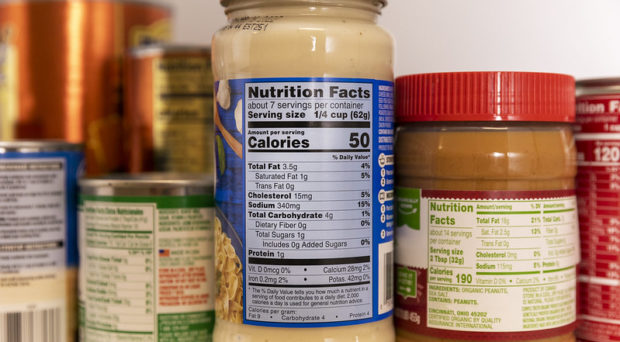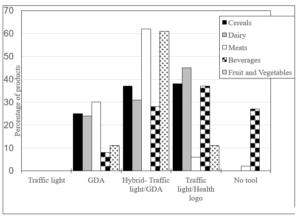
Nutrition labeling is an effective tool used by manufacturers and retailers to improve the public health, and its framework has been of importance to governments and policy makers. The front of pack nutrition labeling is part of United Kingdom government`s program of activities aiming to tackle diet-related diseases. There are several front of pack labeling formats available and they differ in the information they deliver.
Our study
Five hundred food products in five categories [(1) cereals and cereal products, (2) dairy products, (3) beverages, (4) packaged meats and meat products, and (5) pre-packaged fruits and vegetables] from three main United Kingdom retail websites were investigated. A simple random sampling method was used for product selection and, the types of the front of pack labels and levels of healthiness of the foods were assessed.
Dominant front of pack labeling formats in the UK

The traffic light rating system (TLRS) and Guideline Daily Amount (GDA) are believed to provide at-a-glance nutrition information to consumers at the point of purchase and help consumers to choose food products based on their health and nutrition needs. The nutrition information displayed on the front of pack labels allowed food products to be grouped according to their levels of healthiness. The TLRS and GDA are the most common labeling formats that are used in the UK. As seen in the figure below, a combination of TLRS/GDA and TLRS/Health logos were dominant on the assessed food labels.
The levels of healthiness of foods in the UK retail market
The healthiness of foods was assessed by categorizing the food products into ‘healthier’, ’moderately healthy’ and ‘least healthy’ based on fat, saturated fat, salt, and sugar contents. Red means the food is high in one of these and should be eaten less often or in smaller amounts. Amber means the food contains medium amount (neither high nor low) and may be eaten more frequently. Green indicates that the food is low in these nutrients and therefore is a healthier choice.
Food manufacturers are now responding to the trends that are driven by the public`s demand for the wider availability of healthier foods
We found out that a higher number of assessed products belonged to the “moderately healthy” and “healthier” categories than the “least healthy”. This could suggest that food manufacturers are now responding to the trends that are driven by the public`s demand for the wider availability of healthier foods. The imported foods that were found in the United Kingdom retail market also showed that healthier food choices could be made from the diverse food types around the world.
Comments